 Last month, McGraw Powersports hosted a webinar in partnership with Motorcycle & Powersports News (MPN) to host a conversation highlighting the value in maximizing sales of pre-owned powersport vehicles in your dealership.
Last month, McGraw Powersports hosted a webinar in partnership with Motorcycle & Powersports News (MPN) to host a conversation highlighting the value in maximizing sales of pre-owned powersport vehicles in your dealership.
Our webinar focused on how dealers can maximize their pre-owned sales by practicing a few (and maybe new to you) techniques, including acquiring more trade-ins, tapping into online auctions, and visiting local, in-person auctions. The used vehicle marketplace offers immense opportunity for dealerships, their customers, and service providers alike. This complimentary webinar was moderated by Brendan Baker, Editor -at -Large at MPN, and featured a panel of experts including our own Jason Duncan, Regional Sales Manager at McGraw Powersports; Tony Altieri, Director of Business Development at National Powersport Auctions; and Wesley Griggs, Sales and Finance Manager at Mid-State Motorsports.
The webinar began by discussing the state of the pre-owned market and some of the key metrics associated with it. Tony Altieri kickstarted the conversation by proclaiming that “pre-owned is alive and well.”
He went on to outline how statistics measuring dealer registrations, inquiries, and number of unique buyers showed that all facets of the pre-owned powersport industry trended up for 2018 – and 2019 is on a similar trajectory.
These figures were supported by the Motorcycle Industry Council (MIC) and Information Handling Services (HIS), both of which track the number of vehicle registrations annually to gauge how many new vehicles are purchased each year. There are approximately 2.2 million registration transactions per year with about 1.5-1.7 million pre-owned transactions occurring on an annual basis. The average dealership is doing about 1:1 new to used sales and registration numbers have been consistent, even through recessions. In fact, sometimes these numbers even peaked during recession years for pre-owned vehicles, proving that pre-owned sales are an opportunity to add to a dealer’s bottom line at any time during the various economic cycles.
Tapping into this market can be incredibly beneficial as the marketplace continues to see more and more pre-owned vehicles getting financed and products created specifically for them, like Guaranteed Asset Protection (GAP) and 90-day Certified Used Service Contracts. Inherently, new purchasers are worried about depreciation, which is why pre-owned units are a great option for consumers. New riders are starting to choose pre-owned over new vehicles more often, which is why this once small ecosystem of powersports is becoming a large and lucrative line of business.
Wesley Griggs chimed in to outline the main benefits of selling pre-owned and the differences between new and used vehicles. Pre-owned vehicles are completely unique in their mileage, former owners, and pricing.
“You have to know what your niche is. You have to know what the people around you are really looking for and that starts with having your salesman relaying information as far as what people are looking for,” says Wesley.
Brendan Baker reiterated the importance of “knowing your own market” stating that, at a very high level, the benefits of selling pre-owned are variety, price point, and margin control.
“The great thing about stocking pre-owned is that you have the ability as a dealership to designate and design what’s on your floor. You’re not beholden to anyone’s requirements for stocking certain volumes or types or models,” explains Tony.
The big benefit of selling pre-owned is that it allows a dealer to dabble in price point sensitivity. Through surveys and anecdotal feedback, it is becoming increasingly clear that customers are more price- sensitive, meaning you have a lot more consumers that are doing their research and finding the best possible price for their purchase. Selling pre-owned allows dealers to control price point.
Market control is yet another facet of the pre-owned market. Margin compression on new vehicles involves fees that are baked into the purchase, whereas pre-owned doesn’t have these same financial restrictions. It gives dealers the opportunity to entrench themselves with service companies and expand lender portfolios as a dealership because they are able to offer a wider variety of vehicles that fall under different credit tiers. On the backend, dealers can tack on different products and services to increase profit margins and also benefit the customer by protecting their vehicle from unforeseen mechanical failures. When a dealership offers a new, brand- name vehicle, they have to play by that company’s rules in terms of the sale. Pre-owned allows for more flexibility and less red tape. Ultimately, pre-owned is an entirely new source of revenue for dealers. That being said, it’s important to note that the pre-owned customer is a different customer than a new vehicle purchaser. The two are independent, not competing. They can co-exist.
Diving into this idea that new isn’t always the best option for customers suggests that certified pre-owned (CPO) vehicles are the next big thing for powersports dealers. Jason Duncan expanded on this by explaining that a well thought out program will add additional profit compared to regular pre-owned units, but it also gives dealers an additional opportunity for sales. Pre-owned sales allow for dealers to upsell longer term service contracts, maintenance plans, and other coverage options. It is extremely attractive to buyers to have a “turnkey” vehicle so a customer can have confidence in this “new” vehicle with the right coverage options.
The difference between certified pre-owned (CPO) and used vehicles is that CPO creates more value since it requires certain parameters to be met, meaning vehicles are cleaner, have less mileage, and are in better shape. The application of identifying units as CPO means they are premium and special. Dealers can, in fact, sell CPO and non-CPO units, as the two are not mutually exclusive and therefore do not impact new unit sales. Dealers can tailor their used and CPO inventory to what they personally think is acceptable which gives them a certain freedom that would not necessarily be afforded in the sale of a new vehicle.
CPO vehicles have a higher profit margin and include the peace of mind that comes with owning a certified vehicle. If a customer has a problem with the vehicle, an extended service contract (ESC) would also cover any issues, which creates less liability for the dealer as well as better overall customer satisfaction. Even though they are certified, these CPO vehicles should be sold with some sort of ESC such as a McGraw Powersports 90-day CPO. This coverage option has been tailored to both the dealers and the customer’s needs, giving more value to the purchase and also giving dealers and costumers worry-free ownership. Extra coverage benefits everyone for a low cost.
In terms of how to best maximize the customer experience, dealers are encouraged to find vehicles that meet specific qualifications in terms of benefits, safety checks, maintenance items, and coverage options available, and then price competitively. Coverage options like ESCs and maintenance packages insulate dealers from liabilities. It is also important for dealers to increase overall exposure of inventory by listing vehicles online, dedicating floor space to certain models or pre-owned options, having an easily navigable floor plan, and marketing vehicles through various portals. Companies like McGraw Powersports can even help dealers with vehicle marketing since all transactions are mutually beneficial to both dealers and service providers. Companies like McGraw also deal with franchise and non-franchise dealers so there are no limitations in that sense.
At the end of the day, it is the dealers’ responsibility to pick good bikes that are good quality to ensure margins are positive and you don’t have to put a ton of money into certifying a bike. It is equally as important to work companies you trust in any capacity, whether that is for coverage options, lenders, or the brands providing the vehicles. It is also crucial for business to reflect its surroundings. For example, powersports financing is highly specialized in that it differs per credit, type of vehicle, and region of the country. Lenders often look at the quality of the customer and their credit, but also the vehicle they are purchasing, so having a higher quality vehicle helps seal these deals.
The webinar discussing everything above lasted a little under an hour and was free to attendees. Those who tuned in were able to ask questions in real time and offer their feedback through a quick survey accessible via a menu option on the easy-to-use platform. According to follow-up statistics, the majority of the audience remained engaged throughout the entire session with one audience member even making a comment that he was glad he attended!
Be sure to follow McGraw Powersports on Facebook, Twitter, and Instagram to learn when the next webinar will take place. To access this webinar, go to www.mcgrawpowersports.com/webinars.

